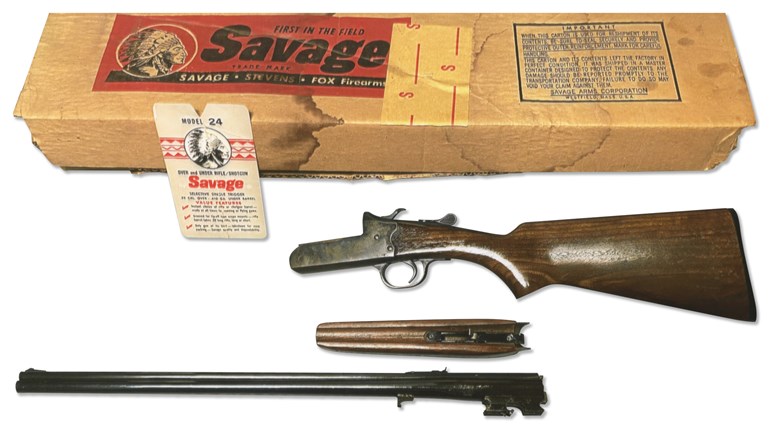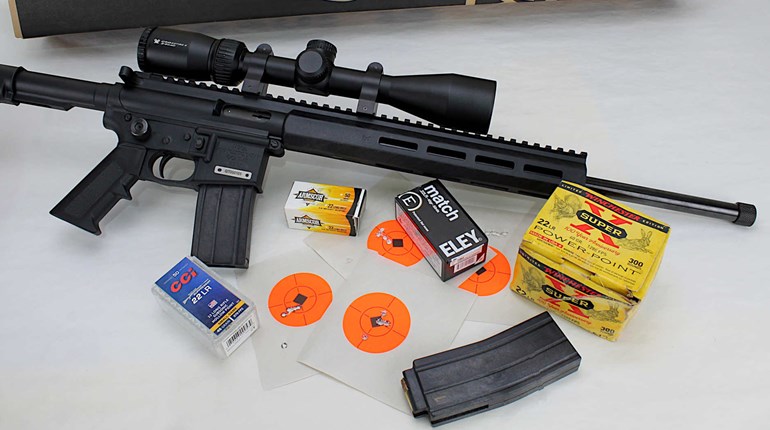
While August is National Shooting Sports Month, that doesn’t mean the fun and learning has to end when the calendar flips to September. The shooting sports are made up of a HUGE group of people—millions! There are more people involved in the shooting sports than camping or golf, and nobody considers confining those activities to a single month. And the most basic shooting activity that you can take part in all year long? Plinking.
Plinking
Plinking is a term that is used very generically to describe … well, plinking. Meaning just shooting at stuff. However, I think the value of plinking is seriously underrated.
Plinking can be everything from using a BB gun to shooting at soda cans, to shooting a reproduction musket. The skills and experience that you acquire from the art of plinking are why it’s such a fun and addictive pastime.
For example, I could take a 50-round box of .22 and I could use a .22 conversion AR and save myself money, save my ears from the noise and get in a lot of work on skills that I want to refine (firearm manipulation, my stance, trigger control, transitions between targets, etc.).
Just because I’m shooting for fun and recreationally doesn’t mean I’m not learning or that I don’t have the opportunity to learn.
If you’re a novice, the simple act of manipulating the firearm and developing really confident practices in using your personal firearms is one place that plinking can help you grow.

Skills and Repetition
Another way plinking can be helpful is if you use it to work on a single specific skill, for example, trigger control or visual patience. If you set up a difficult enough target that requires proper aiming and trigger control, you can work on ensuring you have a proper sight picture before you prep and squeeze the trigger. At the same time, you learn the trigger control required in order to time squeezing the trigger only when the sights are where you want them.
Another way to learn trigger control is with dry fire, and you don’t need the range for that! You can work on it all year from your own home without ammo.
Advanced Skills
Plinking also gives you a chance to work on advanced skills. Say you plan to take your family or significant other out to the range to just shoot. Perhaps you bring a chronograph and learn how to gather the basic ballistic data that you would need to calculate long range holds or learn how to use a ballistic app.
The possibilities are endless, but here are some other suggestions:
- Practice a draw and a reload with a concealed carry firearm.
- Practice picking up and loading your firearm from the condition in which you store it.
- Practice bringing your hunting rifle up to your eye without taking your eye off your target. This will help you if hunting is your primary shooting sport.
- Practice the way you bring your pistol sights onto the target—make sure it’s level and aligned so you can shoot as soon as your sights are on the target.
- Practice your shotgun mount and swing, as well as how you would set up for a flying clay. This can help those who get tired easily or find their shotgun heavy.
- Practice your holds with a rifle optic that has a BDC reticle. Do you understand the hold-overs required for different distances? Does your ammo work with the reticle? Do you know what the different subtensions in your reticle are?
- Work on building your grip properly with your concealed carry firearm.
These are just a few ideas of how plinking can be directed and focused in order to help you learn something while you are at the range. But no matter the amount of your free time or your ammo supply, plinking and working with firearms is the most basic activity you can take part in that will help you become better skilled. How much, how long and how serious you get is up to you. You can just shoot an iron sight .22 at soda cans and learn a lot about sight alignment and trigger control.














































